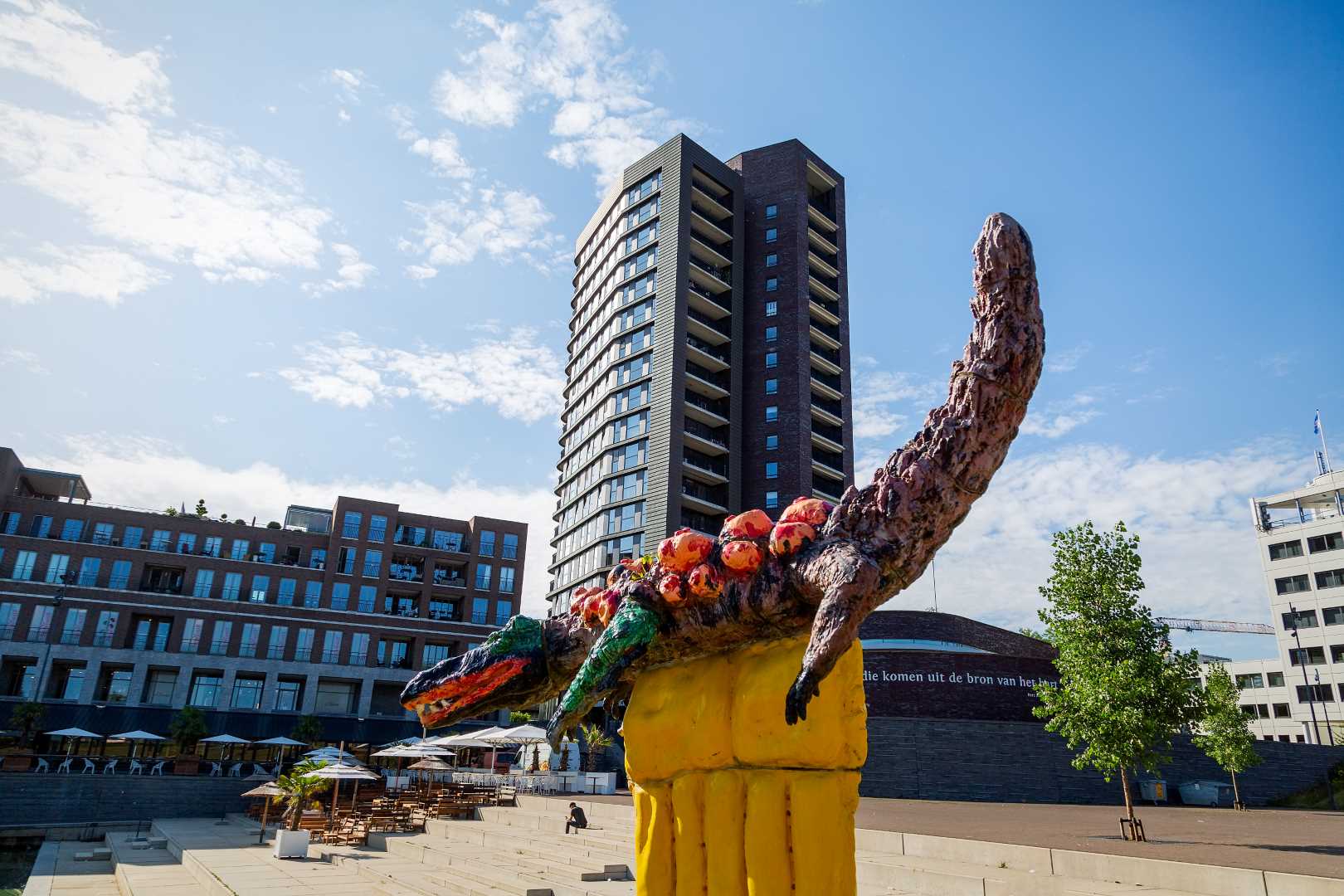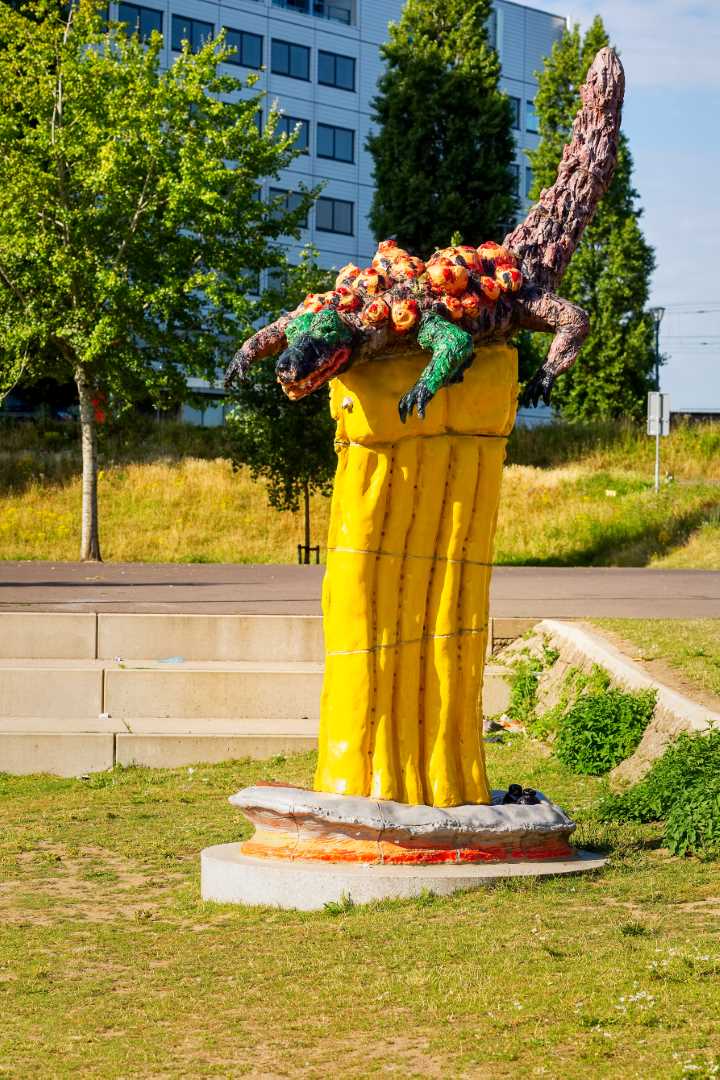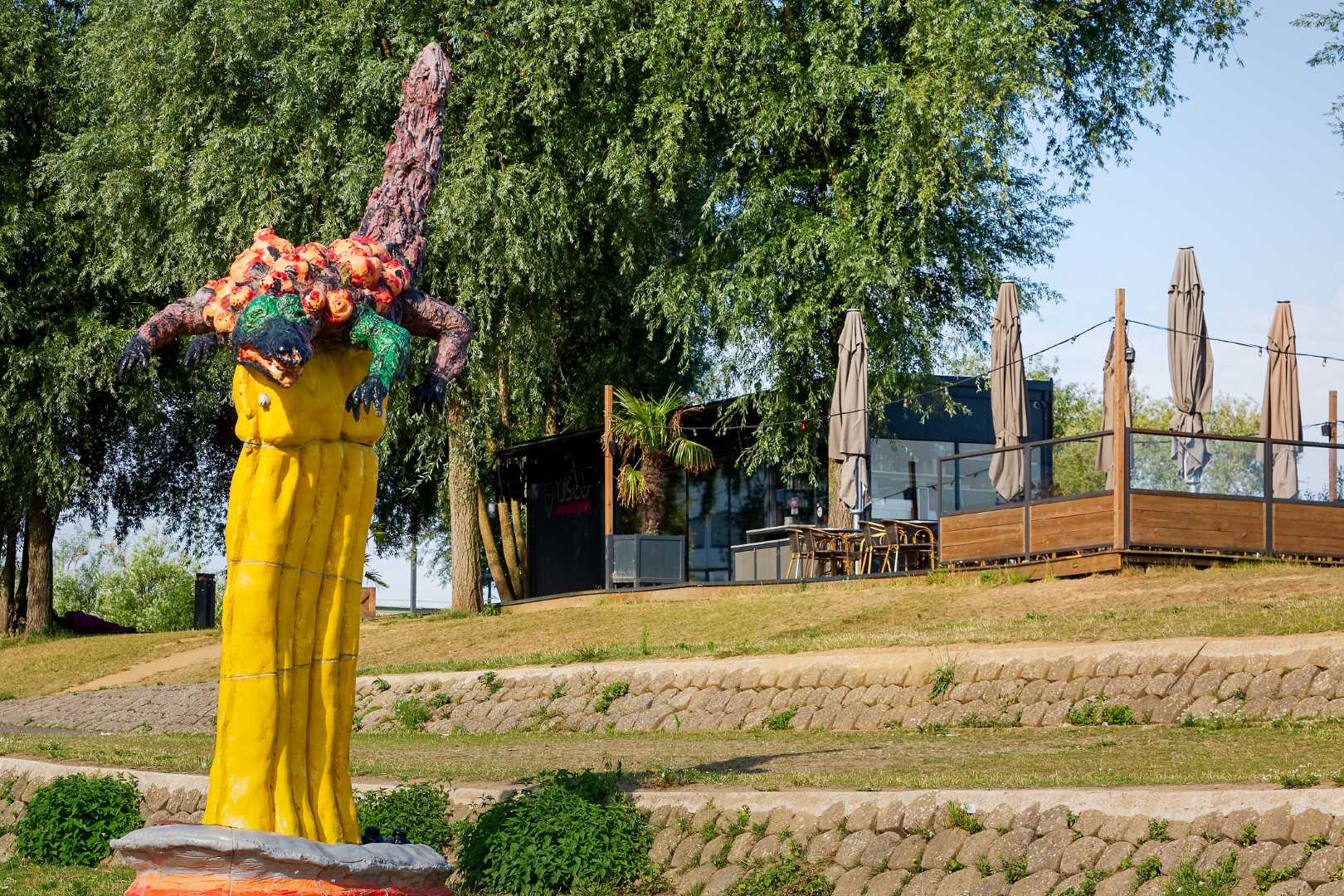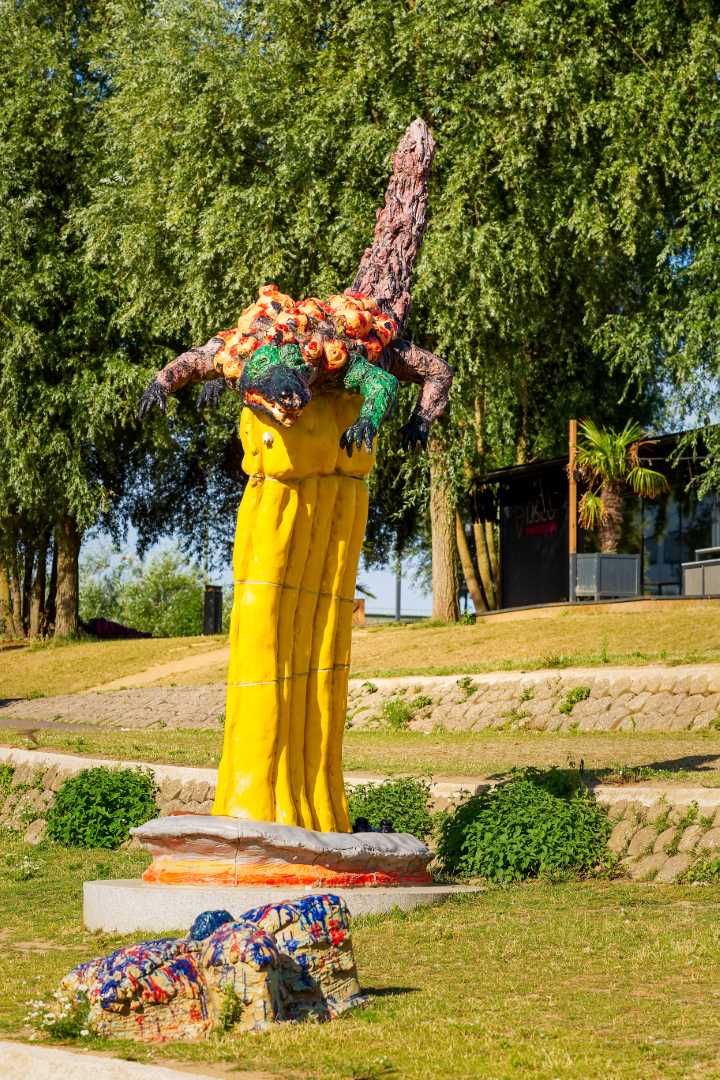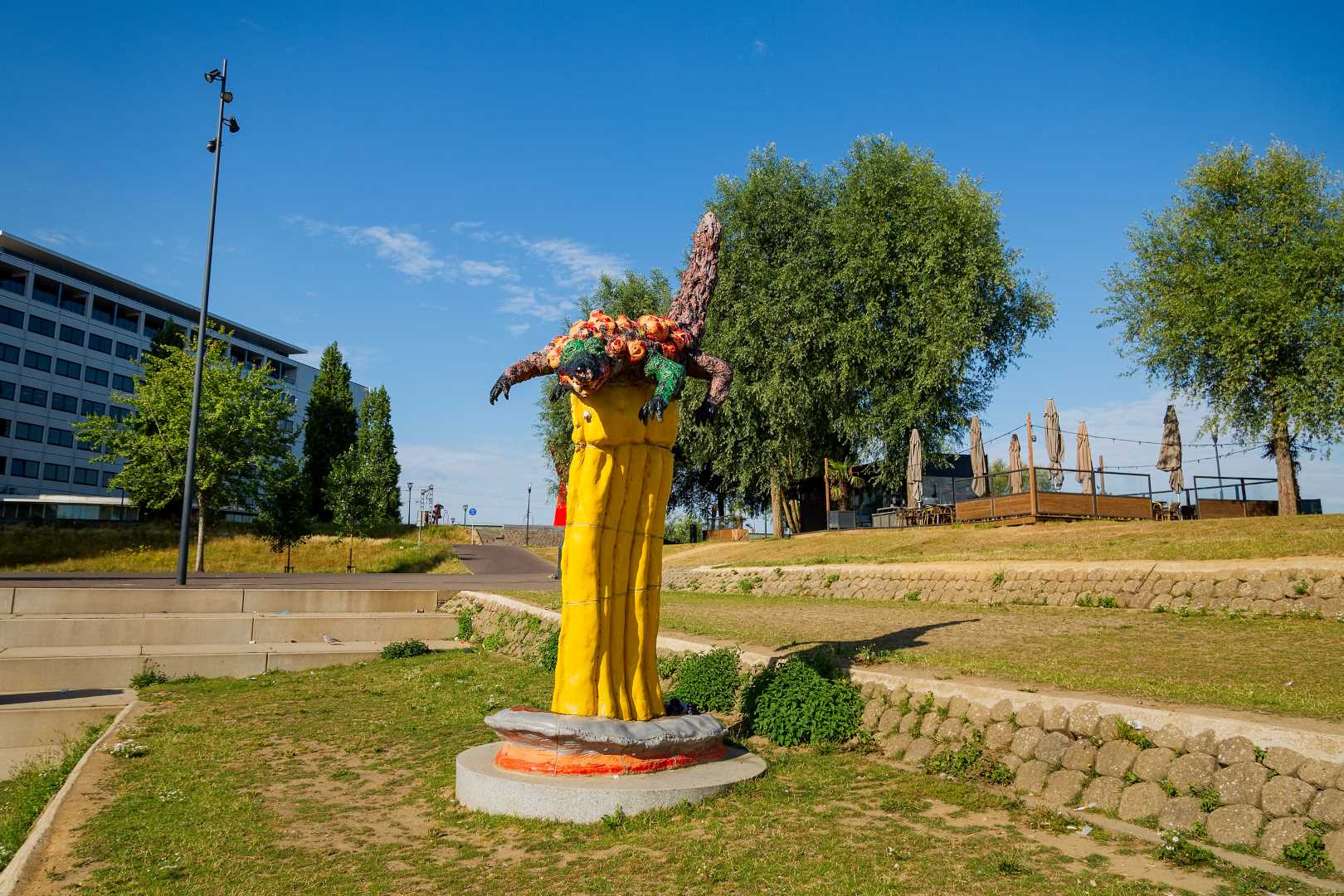Crocodile
Kop van de Weerd/Maasboulevard
Crocodile, 2 starfish and drowning man – Han van Wetering
The construction of the Maasboulevard (which opened in 2011) had yet to begin when, in the 1990s, it was already known that two works of art would be erected there: the Sphinx, which has now disappeared and which has been replaced by Tango, and this group of sculptures by Han van Wetering. The group consists of a crocodile, two starfish and a drowning man. It is a gift to the city of Venlo from the former Zuiveringsschap.
The sculpture group is made of painted ceramic. Van Wetering, who was given complete freedom by the client to make the work, said in an interview that he had tried to evoke a tropical atmosphere with the sculptures. “Although the boulevard is not really tropical, of course,” he added. The location of the sculptures was a conscious choice, with the two stars on the steps and the drowning person positioned so that at high tide he is partly or completely under water.
The artist: Han van Wetering
Johannes (Han) van Wetering was born in 1948 in Maastricht, where he is still active. In that city, he studied at the Stadsacademie and the Jan van Eyckacademie. He has had numerous exhibitions, mainly in the Netherlands. Since 2020, one of his sculptures – Sint Servaas beschut door Adelaar (1981), which can be found in Maastricht – has been part of the list of 100 Key Works in Public Space in the Netherlands from 1945 to the present. This list provides an overview of the diversity of art in public spaces in our country. The reason for compiling this list was the 40th anniversary of the trade journal BK Informatie.
Van Wetering is seen as an imperturbable obstructionist who makes surrealistic works in which ridicule is never far away.
Head of the Weerd
Once upon a time, in the Middle Ages, De Weerd was an island in the Maas river near Venlo. It lay close to the spot where ships loaded and unloaded their goods. In the 18th century, it was decided to connect the island to the Maas river. This was done by raising low spots in the Maas with rubble. This created Bastion Le Roy, which became part of the city’s fortifications. In the 19th and 20th centuries, what was now called Kop van de Weerd was part of Venlo’s harbour. The working-class neighbourhood ‘t Hetje, where many people who worked in the harbour lived, was part of this harbour. Until after the Second World War, the Venlo harbour area was full of life, but when the first industrial estates were relocated outside the city in the 1960s, the activity in the old harbour was done away with. The Kop van de Weerd became a car park from the 1970s onwards, and the harbour area became rundown. The construction of the shopping and recreational area Maasboulevard changed all that. The Kop van de Weerd was transformed into a city park with a view of the marina in Venlo’s city centre.
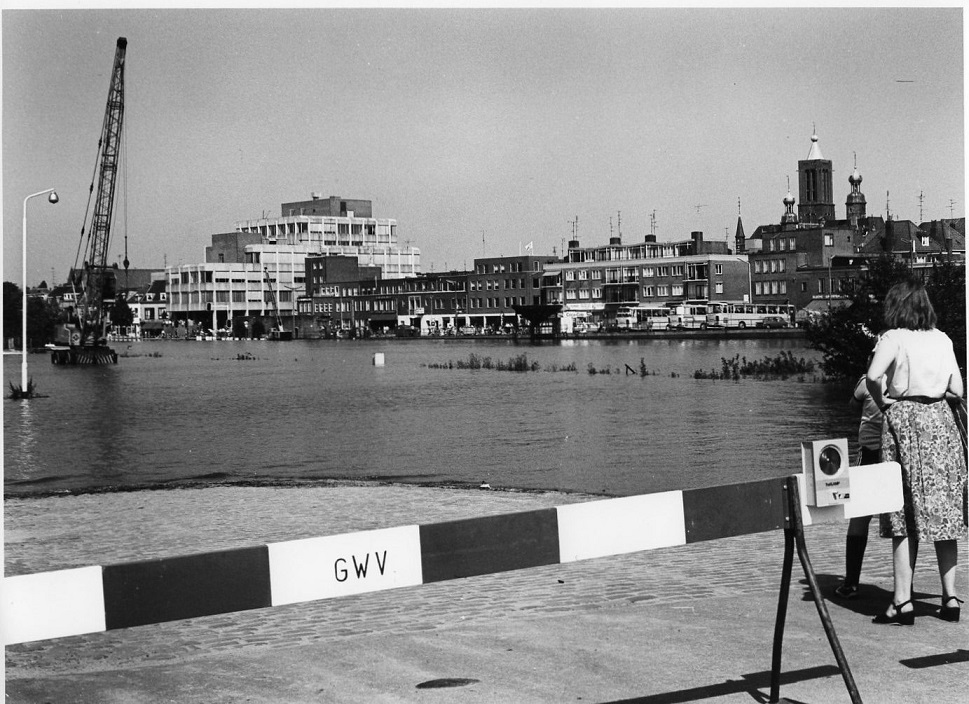
During high water of the Meuse, the Kop van De Weerd (left of the fence) also disappears partly or completely under water, as here in 1980. On the left in the background: the former city office, which was demolished in 2011. Right: the town hall and behind it the tower of St Martinus church. (Photo: City Archive Venlo)

